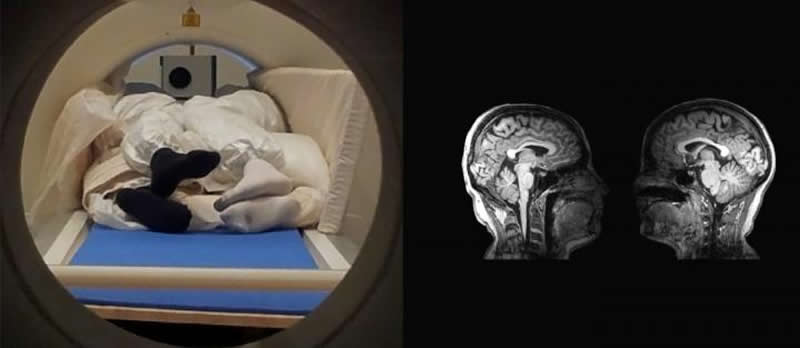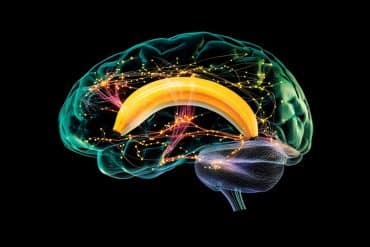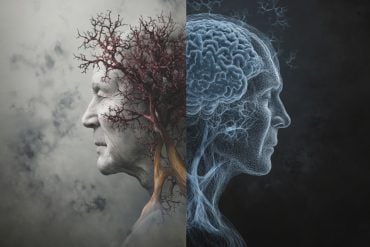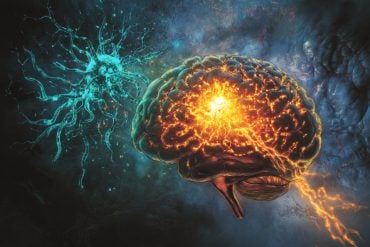Summary: A novel two-person MRI study reveals what goes on in the brain when two people touch and cuddle. During the interaction, the subjects’ brain activity synchronized.
Source: Aalto University
Researchers at Aalto University and Turku PET Centre have developed a new method for simultaneous imaging brain activity from two people, allowing them to study social interaction.
In a recent study, the researchers scanned brain activity from 10 couples. Each couple spent 45 minutes inside the MRI scanner in physical contact with each other. The objective of the study was to examine how social contact activates the brain. The results were published in the theme issue Social Interaction in Neuropsychiatry of the journal Frontiers in Psychiatry.
“This is an excellent start for the study of natural interaction. People don’t just react to external stimuli, but adjust their actions moment-by-moment based on what they expect to happen next,” says Riitta Hari, emerita Professor at Aalto University.
Ordinary magnetic resonance imaging is used to scan one person at a time. In the device developed at Aalto University, the head coil used for regular brain scans was divided into two separate coils. This new design allows for simultaneous scanning of two brains, when the individuals are positioned close enough to each other inside the scanner. During scanning, the participants were face-to-face, almost hugging each other.

When instructed by the researchers, the subjects took turns in tapping each other’s lips. Looking at the brain scans, the researchers could see that the motor and sensory areas of the couples’ brains were activated.
Studying the fundamentals of human interaction
“During social interaction, people’s brains are literally synchronised. The associated mental imitation of other people’s movements is probably one of the basic mechanisms of social interaction. The new technology now developed will provide totally new opportunities for studying the brain mechanisms of social interaction,” says Professor Lauri Nummenmaa from Turku PET Centre.
“For example, during a conversation or problem solving, people’s brain functions become flexibly linked with each other. However, we cannot understand the brain basis of real-time social interaction if we cannot simultaneously scan the brain functions of both persons involved in social interaction,” Riitta Hari says.
Funding: The study was funded by the European Research Council (ERC) and the Academy of Finland.
About this neuroscience research article
Source:
Aalto University
Media Contacts:
Riitta Hari – Aalto University
Image Source:
The image is credited to Ville Renvall/ Aalto University.
Original Research: Open access
“Imaging Real-Time Tactile Interaction With Two-Person Dual-Coil fMRI”. by Ville Renvall et al.
Frontiers in Psychiatry doi:10.3389/fpsyt.2020.00279
Abstract
Imaging Real-Time Tactile Interaction With Two-Person Dual-Coil fMRI
Studies of brain mechanisms supporting social interaction are demanding because real interaction only occurs when persons are in contact. Instead, most brain imaging studies scan subjects individually. Here we present a proof-of-concept demonstration of two-person blood oxygenation dependent (BOLD) imaging of brain activity from two individuals interacting inside the bore of a single MRI scanner. We developed a custom 16-channel (8 + 8 channels) two-helmet coil with two separate receiver-coil pairs providing whole-brain coverage, while bringing participants into a shared physical space and realistic face-to-face contact. Ten subject pairs were scanned with the setup. During the experiment, subjects took turns in tapping each other’s lip versus observing and feeling the taps timed by auditory instructions. Networks of sensorimotor brain areas were engaged alternatingly in the subjects during executing motor actions as well as observing and feeling them; these responses were clearly distinguishable from the auditory responses occurring similarly in both participants. Even though the signal-to-noise ratio of our coil system was compromised compared with standard 32-channel head coils, our results show that the two-person fMRI scanning is feasible for studying the brain basis of social interaction.
Feel Free To Share This Neuroscience News.






